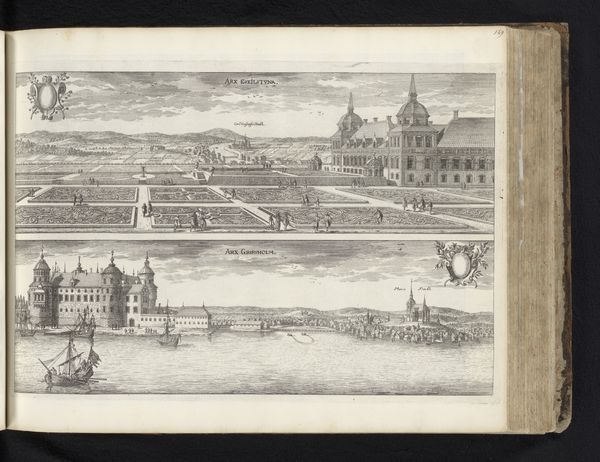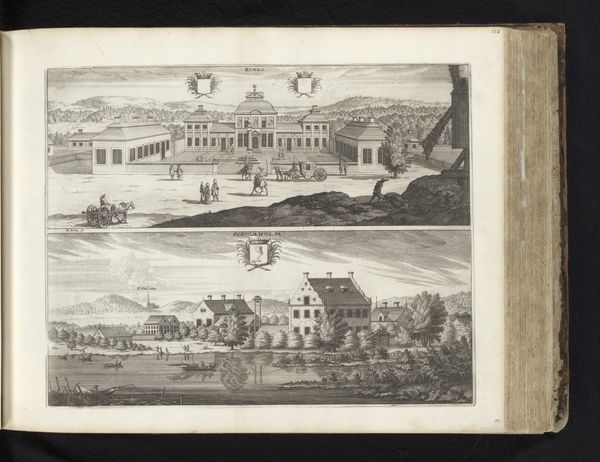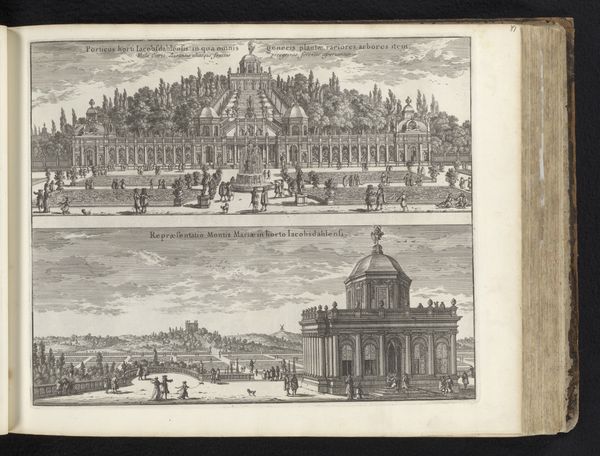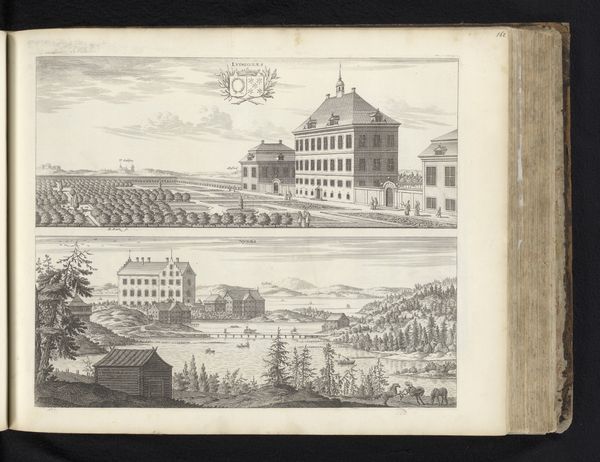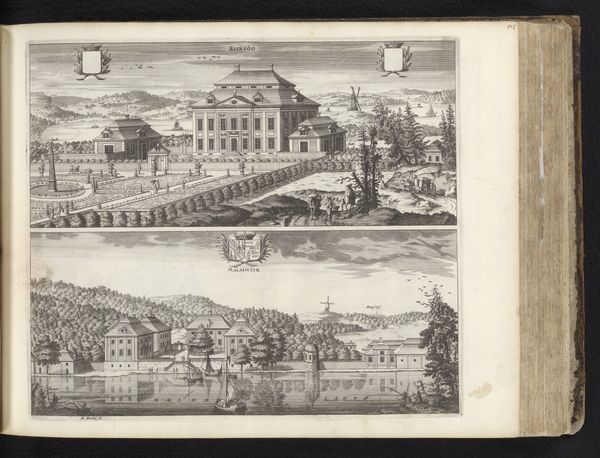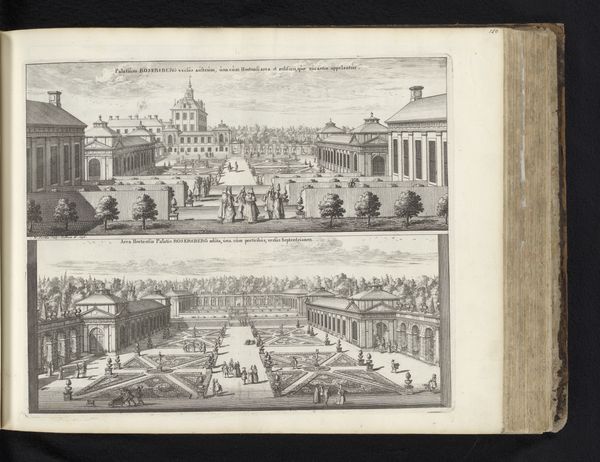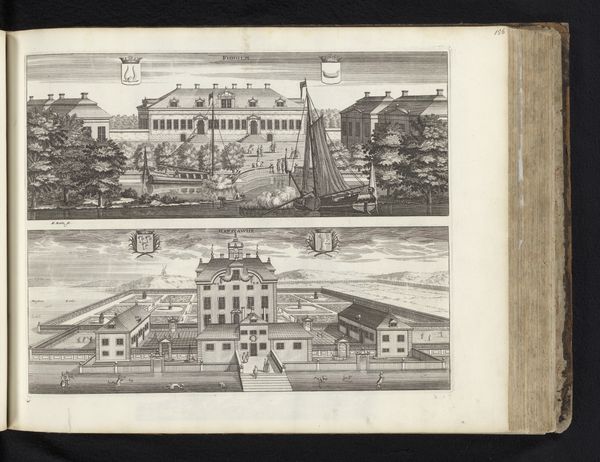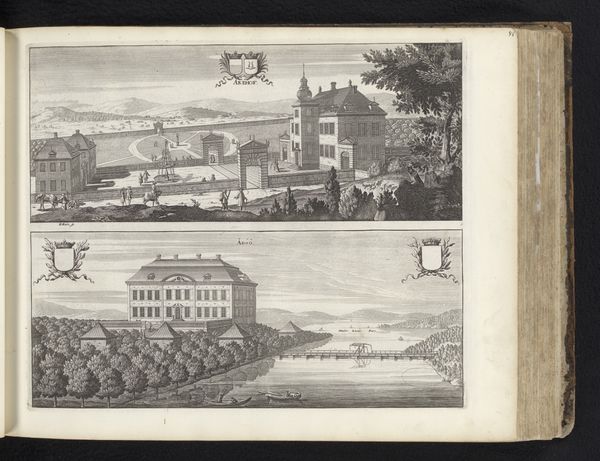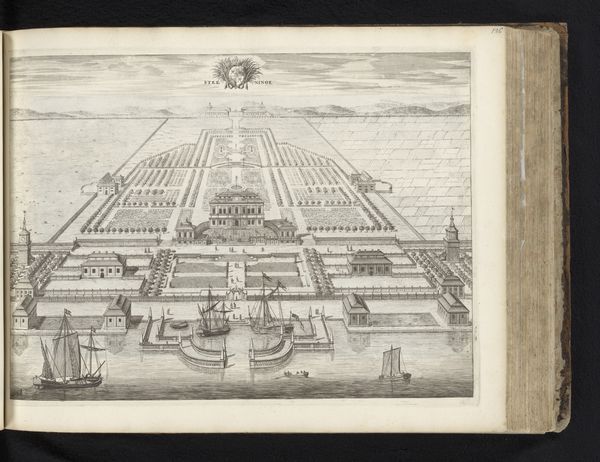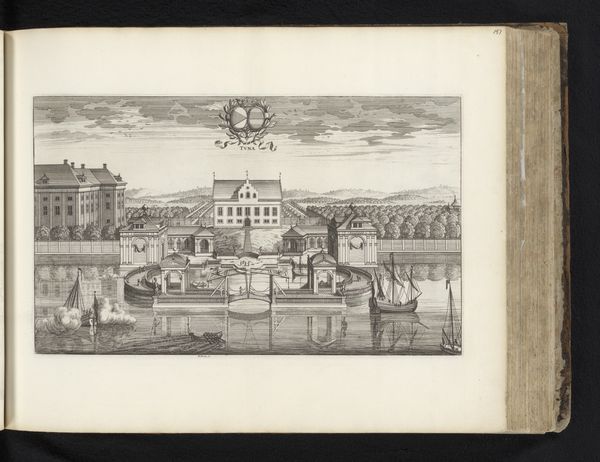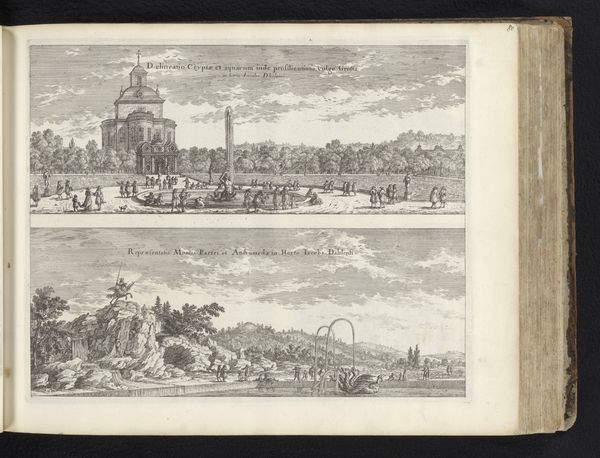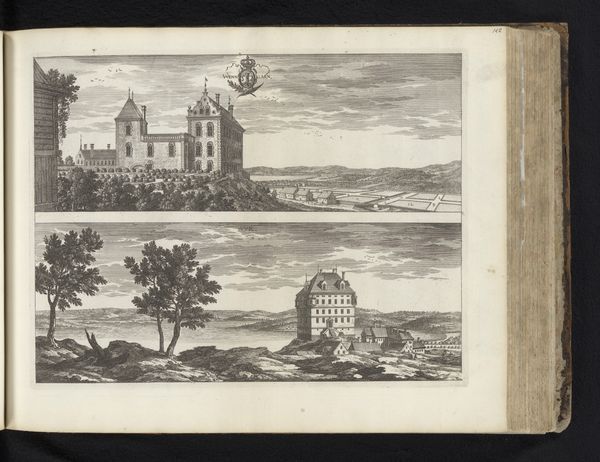
Gezicht op de kassen van landgoed Stavsund en het hoofdgebouw vanuit het oosten 1694
0:00
0:00
print, engraving
#
baroque
# print
#
landscape
#
cityscape
#
engraving
Dimensions: height 280 mm, width 334 mm
Copyright: Rijks Museum: Open Domain
Curator: The print before us is titled, “View of the Greenhouses of the Stavsund Estate and the Main Building from the East,” created in 1694 by Erik Reitz. It showcases two different estate views. Editor: It’s struck me instantly with the contrasting interplay between architecture and nature. The rigid, symmetrical design of the buildings and gardens is striking. The way light falls across the facades is especially compelling. Curator: Yes, symmetry was quite the trend in Baroque estate design. What Reitz depicts is not just a building, but a manifestation of power. Stavsund's owner clearly intended to showcase control over the environment. The very act of precisely capturing it through the reproducible medium of print extended that statement of authority. Editor: Precisely! The print itself reinforces this sense of order. The horizontal divisions and balanced composition give a clear sense of structure, but there’s more than just mirroring. Note how the engraving lines modulate light and shadow, giving volume to form but flattening the perspectival illusion somewhat, thus further emphasizing planarity. Curator: Absolutely. Remember, prints like these also functioned as status symbols. They circulated among elites, reinforcing networks and celebrating shared values of the period: control, wealth, and refined taste. Reitz, by portraying Stavsund, elevated both the estate and its patron into this desirable conversation. Editor: It's intriguing how Reitz used lines to depict various textures and distances within a monochrome palette. There is real skill on display in the economy of mark making to generate the depth, shadows, and perspective. Curator: We can see that Reitz uses familiar artistic styles in landscape architectural drawing. The perspective he offers helps the audience not only understand the building layout but further consider their personal journey from the outside into these spaces of the privileged class. Editor: Looking closely has allowed me to realize how deliberately Reitz arranged the various structural details. Curator: Studying the broader distribution of prints such as these, what can be discerned from the image transcends being mere depiction to its serving as evidence of cultural communication through art.
Comments
No comments
Be the first to comment and join the conversation on the ultimate creative platform.

